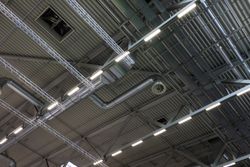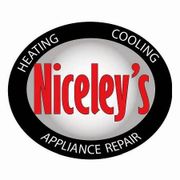
Dryers work by heating up clothing to spark an evaporation response, and a current of air formed through an air duct moves air outdoors, along with water vapor, drying your clothing. However, without dryer vents, this modern miracle wouldn’t be able to happen. Here is a little more information about dryer vents, and how to handle dryer vent cleaning.
5 Common Types of Dryer Vents
1. Aluminum Foil Ducts
Also called flex tubing, aluminum foil ducts are made from flexible aluminum tubing with ridges crimped into the sides to create a structured, hollow opening for the duct line. Many installers prefer aluminum foil ducts because of their flexibility. However, dryer vent cleaning becomes difficult with these common ducts, since lint can gather between the ducts. Since this can be a problem, aluminum foil ducts are not recommended for longer runs.
2. Semi-Rigid Metal Ducts
Like aluminum foil ducts, semi-rigid ducts are flexible, but much stronger and sturdier. Typically used for transitions between fixed runs, semi-rigid metal ducts shouldn’t be concealed in walls for floors. Sections are typically connected with clamps, making it easy to access and perform dryer vent cleaning.
3. Rigid Metal Ducts
 Many dryer installations are completed using rigid metal ducts since these lines are designed to have a smooth interior that won’t catch grime. Rigid metal ducts can be more time-consuming to install because each segment is fitted for the space. Rigid ducts are available in aluminum and steel and are the only ducting application allowed in enclosed spaces, such as walls, floors, and ceilings.
Many dryer installations are completed using rigid metal ducts since these lines are designed to have a smooth interior that won’t catch grime. Rigid metal ducts can be more time-consuming to install because each segment is fitted for the space. Rigid ducts are available in aluminum and steel and are the only ducting application allowed in enclosed spaces, such as walls, floors, and ceilings.
4. Plastic or Vinyl Ducts
Plastic or vinyl ducts are designed to be flexible like aluminum foil ducts, but made with soft plastic or vinyl sides. Since this material can become more flexible or even melt when it is exposed to heat, it is not recommended for venting any system that expels warm air, such as a kitchen range hood or a clothing dryer. In fact, many building codes prohibit the use of plastic or vinyl ducting.
5. Slim Ducts
Slim ducts are designed as one single unit, and designed to be placed in the wall. These telescoping aluminum ducts are flat and can be placed directly behind a dryer. On one end, the duct connects to the dryer, and on the other end, an opening is made in the home to create a vent.
Anytime you have questions or concerns about your home’s vent work, turn to Niceley’s Appliance Repair Inc. With a commitment to supporting DIY’ers, this trusted business has been offering parts, service, and ongoing maintenance to customers throughout Northern Kentucky for more than 25 years. To learn more about how they can help you with dryer vent cleaning or installation, visit their website or give their office a call at (859) 342-9900.
About the Business
(1,300 reviews)
Have a question? Ask the experts!
Send your question

